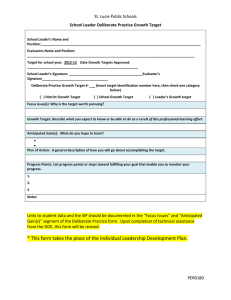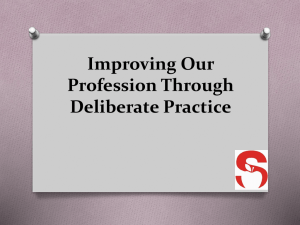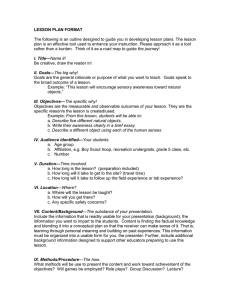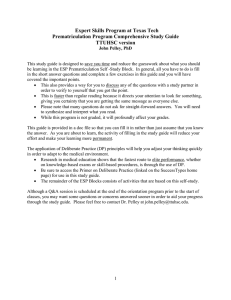Expert Skills Program at Texas Tech Concept Mapping Study Guide
advertisement
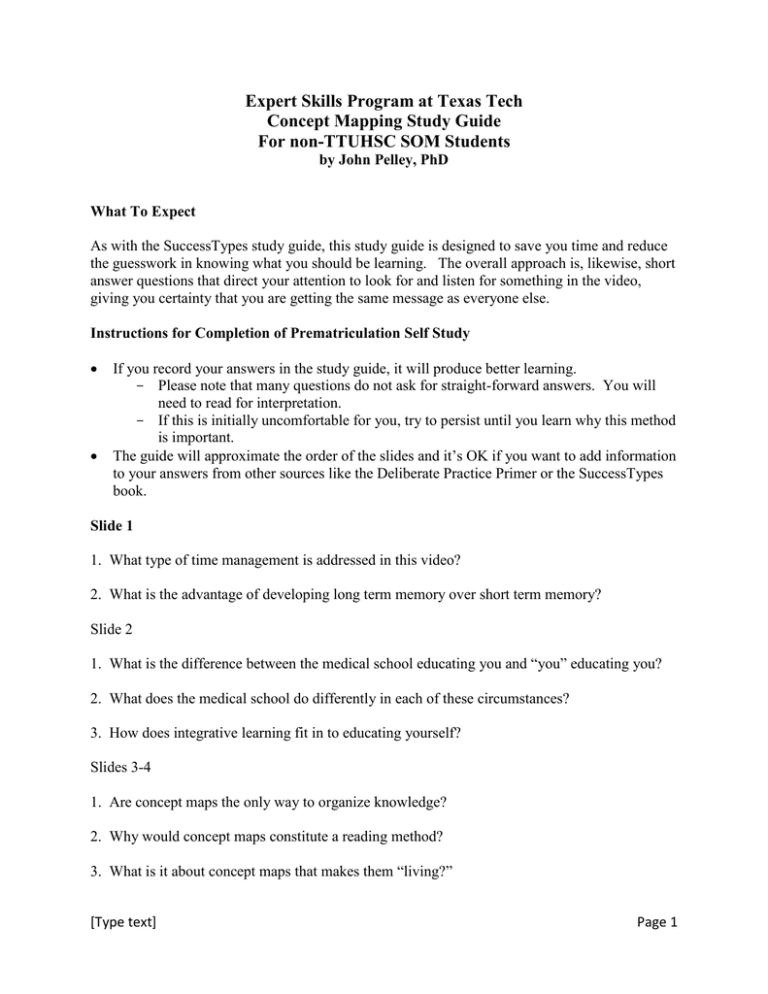
Expert Skills Program at Texas Tech Concept Mapping Study Guide For non-TTUHSC SOM Students by John Pelley, PhD What To Expect As with the SuccessTypes study guide, this study guide is designed to save you time and reduce the guesswork in knowing what you should be learning. The overall approach is, likewise, short answer questions that direct your attention to look for and listen for something in the video, giving you certainty that you are getting the same message as everyone else. Instructions for Completion of Prematriculation Self Study If you record your answers in the study guide, it will produce better learning. - Please note that many questions do not ask for straight-forward answers. You will need to read for interpretation. - If this is initially uncomfortable for you, try to persist until you learn why this method is important. The guide will approximate the order of the slides and it’s OK if you want to add information to your answers from other sources like the Deliberate Practice Primer or the SuccessTypes book. Slide 1 1. What type of time management is addressed in this video? 2. What is the advantage of developing long term memory over short term memory? Slide 2 1. What is the difference between the medical school educating you and “you” educating you? 2. What does the medical school do differently in each of these circumstances? 3. How does integrative learning fit in to educating yourself? Slides 3-4 1. Are concept maps the only way to organize knowledge? 2. Why would concept maps constitute a reading method? 3. What is it about concept maps that makes them “living?” [Type text] Page 1 4. What are the needs of ADD/ADHD students that create problems during ordinary reading? How do concept maps address this? 5. Why is a visual representation of your knowledge useful in learning a subject? Slides 5-6 1. How do concept maps help identify ways to apply Deliberate Practice to learning? 2. What happens in the absence of Deliberate Practice to skills that have been mastered? 3. Try to explain how learning is an acquired skill. 4. What is revealed by concept maps that allow the application of Deliberate Practice? Slides 7-9 1. What is the fundamental unit of a concept map? What is the circle (or other shape) called? The connecting line? 2. How do you identify, or recognize, a level of hierarchy in a concept map? 3. What are the two main layouts for a concept map and which one is preferred by most sensing (linear learner) types? 4. Why are cross-links important? 5. What is accomplished by using verbs and other modifiers with the connections? 6. What is the first thing you do when you want to start a map? 7. What do you look for when scanning your initial list? 8. When do you actually start constructing the map and what do you enter first? 9. How many levels down in the map will you complete out of your initial list? 10. When you get really good at mapping, will you only have to make one map instead of redrawing it? 11. Is it possible for mapping to become faster than ordinary reading? 12. When should you insert cross-links into your maps? 13. What do you have to do to find cross-links? Will your teachers provide these for you? [Type text] Page 2 Slides 10-21 1. In the example slides, can you identify the first level? Second level? Crosslinks? 2. Why would you want to use expansion maps? How would you minimize this? 3. What purpose is served by the white space in a map? Slides 22-24 1. What are the components of a map that shows only recall learning? 2. What are the components of a map that show the analysis level of learning? 3. What additional component does a comparison level map have that is not found in the analysis level map? Slide 25 1. What is the quick and easy phrase that you can refer to when constructing your maps? Slides 26-27 1. When is the best time to construct a concept map with a computer program? 2. What would be the reasons for constructing your maps on a computer? 3. What is the recommended free computer program for concept mapping? Slides 28-30 1. How do concept maps help sensing types? 2. How do concept maps help intuitive types? 3. How do concept maps serve as Deliberate Practice for all types of learners? 4. Is linear learning unimportant? Why? 5. Why do center-out maps work for intuitive types but not sensing types? 6. When you are doing the first step in concept mapping, what areas of the brain are active and how are they functioning? 7. When you are sleeping, where in the brain is the new information recorded? What anatomical change occurs when the recording occurs? [Type text] Page 3 8. What part of the brain makes the decision to insert each component of the map as well as the overall design of the map? 9. What areas of the brain are involved in actually drawing the concept map? Slide 31 1. How do the individual steps in the learning cycle relate to learning style? To your learning style opposite? 2. How would you determine if the “concrete experience” step was a limitation in your learning? 3. How would you determine if the “reflective observation” step was a limitation in your learning? 4. How would you determine if the “abstract hypothesis” step was a limitation in your learning? 5. How would you determine if the “active testing” step was a limitation in your learning? Slide 32 1. What is the primary barrier to utilization of concept maps? Why? 2. How does personality type affect attitude toward concept mapping? 3. Why does concept mapping require so much energy? Slides 33-35 1. What is the purpose of leaving a lot of white space in a map? 2. What is lost when you study someone else’s map? 3. What is a positive way to use someone else’s map? 4. What is it about the medical curriculum that causes maps to grow? 5. If you don’t include everything in your map, is something wrong? 6. How do you refine a map over the weekend? 7. Which is more important, the finished map or making the map? 8. What is meant by saying that concept maps are a discovery process? What part(s) of the brain are responsible for discovery? How? [Type text] Page 4 Slide 36 1. What have you learned from this video? Try to answer without looking at what you have filled in. Could you talk to someone about what you have learned? [Type text] Page 5
